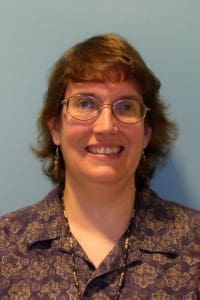Is There A Link
Parkinson’s & Gaucher?

Gaucher disease is an example of a “Mendelian” disorder, where defects in a single gene are the primary cause of the disease. Many common human diseases, such as hypertension, diabetes and arthrosclerosis, result from interactions between multiple genes and environmental factors such as diet, infections or exposure to toxins. In order to understand the changes in cellular mechanisms that result in these complex, or “multigenic’, diseases, researchers can gain information from rare, single gene disorders that share symptoms with more common, complex diseases.
Gaucher Disease and Parkinsonism Several new studies have reported evidence for an association between Gaucher disease and the development of “parkinsonism”. This term refers to neurologic disorders that have many different causes, but share the classic manifestations of Parkinson disease, such as tremor, stiffness and a shuffling walk. The first hints of a relationship between the two disorders came from scattered case reports of patients with Gaucher disease who developed an early-onset form of parkinsonism . We reported on a series of 17 such individuals from both Ashkenazi Jewish and diverse ethnic backgrounds. Generally, these patients had relatively mild Gaucher manifestations, with an average age at diagnosis of 35 years, while their parkinsonian symptoms developed fairly early, with an average age at diagnosis of 48 years. Autopsy evidence from some of these patients showed changes consistent with Parkinson disease, including characteristic structures in brain tissue known as “Lewy bodies”. We also noted that some of these patients had a family history of Parkinson disease, even in relatives who did not have Gaucher disease.
Parkinson Disease and a Gaucher Gene Mutation Subsequently, we began a study of brain tissue from individuals with Parkinson disease to investigate how frequently Gaucher (glucocerebrosidase) mutations occur in this population. Mutations in the glucocerebrosidase gene are rare; the carrier frequency for the two most common mutations, N370S and c.84insG, in people of Ashkenazi Jewish descent is about 6%, and is only about 0.4-0.8% in the general population. We obtained samples from 57 subjects with pathologically confirmed Parkinson disease, and from 44 age-matched controls without pathological evidence of Parkinson disease, from five different brain banks around the USA. (Brain banks store tissues from individuals who donate their bodies for research purposes.) To our surprise, we discovered that Gaucher mutations were detected more often than expected in the Parkinson samples. Direct sequencing of the entire glucocerebrosidase gene revealed that eight (14%) harbored at least one Gaucher mutation, while none were found in the controls. The individuals with the Gaucher mutations tended to be among the younger subjects screened. These findings suggested that mutations in the glucocerebrosidase gene, even in carriers, might be a significant inherited risk factor for the development of parkinsonism.
When we speak of a risk factor, it is very different from identifying a gene or gene defect that is directly responsible for the disease. Risk factors can be environmental, like smoking, diet or exposure to toxins, or genetic. As mentioned above, disorders such as Parkinson disease, diabetes or asthma are considered complex because interactions between multiple genes and environmental factors determine whether an individual will develop the disease. If a person inherits one particular gene defect that is a risk factor, it does not mean that he or she will be affected. However, if the person inherits several contributing genes or is exposed to environmental factors, he or she may be more at risk to develop the disease in question.

Mary E. LaMarca – Biologist – NIH “Several new studies have reported evidence for an association between Gaucher disease and the development of “parkinsonism.”
Supporting Evidence In the past few months, several groups have reported findings that show an increased frequency of Gaucher mutations in patients with parkinsonism. In a series of 99 Ashkenazi Jewish patients with classic Parkinson disease seen at a clinic in Northern Israel, 31 (31.3%) were found to carry the glucocerebrosidase mutations N370S or c.84insG. This frequency was at least five-fold higher than observed in the study’s two control groups. In a report from a New York City clinic, however, 160 Ashkenazi Jewish probands with Parkinson disease and 92 age-matched controls of Jewish ancestry were screened for just the N370S mutation. The authors found 17 probands (10.7%) with N370S, as compared to 4.3% of controls. These results differ remarkably from the frequency described in the Israeli cohort, so more extensive, larger-scale studies are needed in the Ashkenazi population to establish the true frequency of this finding.
A group from Toronto screened for seven glucocerebrosidase mutations in 88 unrelated Caucasian subjects of Canadian origin with clinically diagnosed Parkinson disease, selected for an early age of onset or a positive family history. These subjects were compared to 122 clinically screened controls. The authors identified mutations in 5.6% of the cohort with Parkinson disease, as compared to 0.8% of the control group. These independent studies, despite their differences in design and patient population, suggest that Gaucher mutations are found in subjects with parkinsonism at a frequency higher than expected carrier frequencies.
Then We Approached It Another Way Using a totally different approach, we asked the families of our patients with Gaucher disease about relatives with parkinsonism. We identified ten families where carriers of Gaucher mutations, usually a parent or grandparent of the Gaucher patient, developed parkinsonian manifestations. As some of these families were self-referred, it is still too early to establish how common this finding is among all families of patients with Gaucher disease.
Awareness Is Important For the medical community, awareness of this association is important to help better understand the possible relationship between Gaucher and Parkinson disease. Patients with Gaucher disease should be specifically questioned regarding a family history of tremor or dementia and, likewise, subjects with parkinsonism might be asked whether any relatives have Gaucher disease.
As a patient, if you have a relative with Parkinson-related symptoms, it would be worthwhile to inform your doctor. However, it is not necessary to live in fear of developing Parkinson disease – this is still a very rare finding. Based upon the clinical histories of thousands of patients with Gaucher disease, it is evident that the vast majority never develop Parkinson disease. Likewise, most Gaucher carriers do not have Parkinson disease, and, even in families where it is seen, some carriers develop it and others do not. It is also important to remember that Parkinson disease by itself is a very common disorder, present in 1% of the population, and in as many as 3% of older Americans. Currently, especially in light of the different frequencies reported in these studies, it is best to consider that mutations in the glucocerebrosidase gene are just one of a multitude of potential risk factors for Parkinson disease to which all of us are exposed.
What Does All This Mean? Research into the possible links between Gaucher disease and Parkinson disease is continuing in multiple laboratories. Some are looking at the frequency of Gaucher mutations in groups of Parkinson patients from different ethnic backgrounds. Others are studying the ways in which alterations in the glucocerebrosidase protein could affect cells in the brain and contribute to the changes seen in parkinsonism. Researchers hope that understanding how defects in glucocerebrosidase might affect the symptoms of Parkinson disease will lead to the development of more effective treatments for both disorders.
Authored and Printed July 1, 2005
Ellen Sidransky M.D. … Chief, Section on Molecular Neurogenetics – NSB, National Institute of Mental Health and – MGB, National Human Genome Research Institute – National Institutes of Health
Mary E. LaMarca … Biologist – Section on Molecular Neurogenetics – NSB, National Institute of Mental Health – National Institutes of Health






